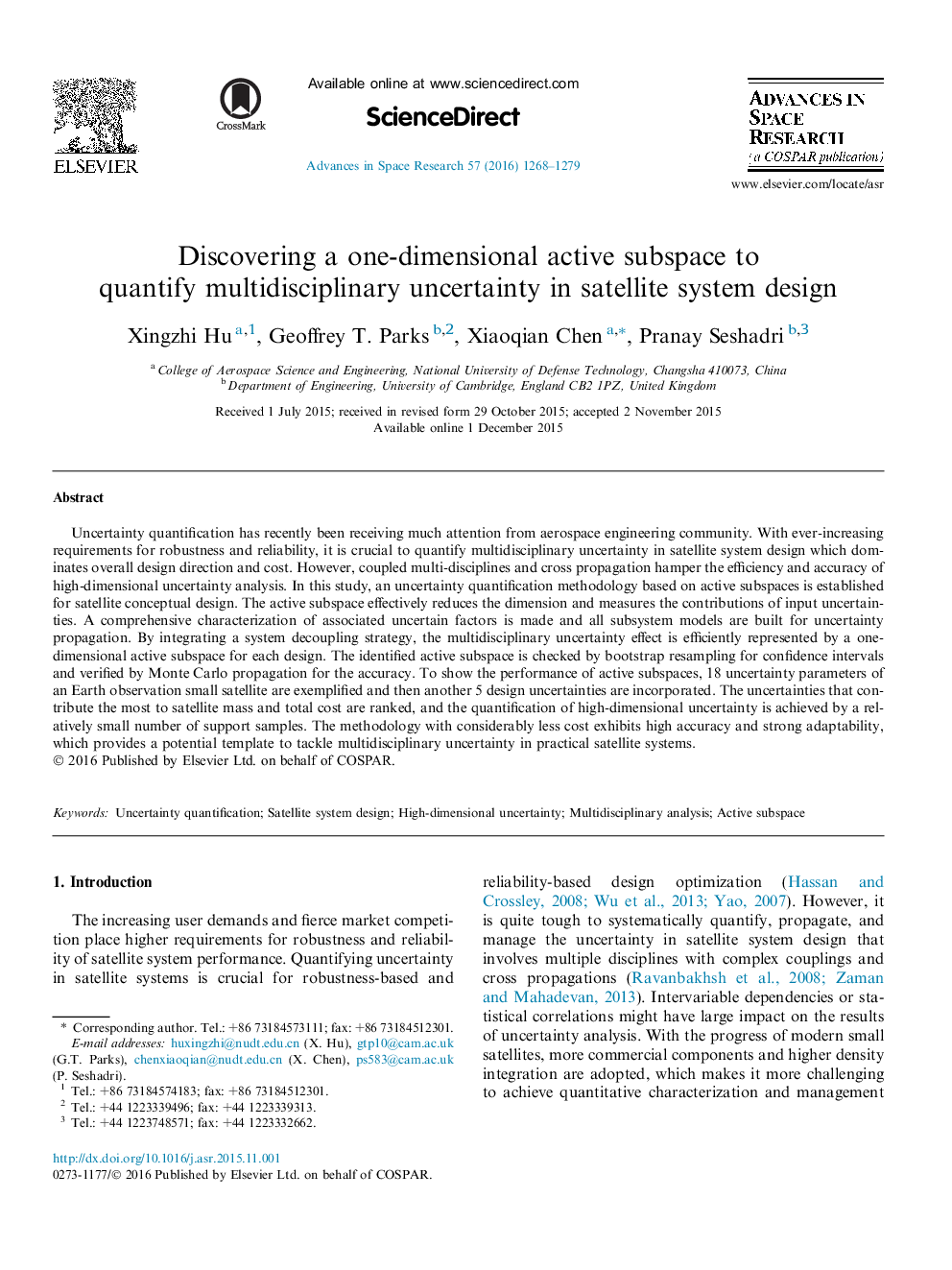| Article ID | Journal | Published Year | Pages | File Type |
|---|---|---|---|---|
| 1763810 | Advances in Space Research | 2016 | 12 Pages |
•A high-dimensional uncertainty quantification methodology is systematically built.•1D linear active subspace is discovered for satellite system multi-uncertainty.•It achieves the rank of all variables and accurate uncertainty propagation easily.
Uncertainty quantification has recently been receiving much attention from aerospace engineering community. With ever-increasing requirements for robustness and reliability, it is crucial to quantify multidisciplinary uncertainty in satellite system design which dominates overall design direction and cost. However, coupled multi-disciplines and cross propagation hamper the efficiency and accuracy of high-dimensional uncertainty analysis. In this study, an uncertainty quantification methodology based on active subspaces is established for satellite conceptual design. The active subspace effectively reduces the dimension and measures the contributions of input uncertainties. A comprehensive characterization of associated uncertain factors is made and all subsystem models are built for uncertainty propagation. By integrating a system decoupling strategy, the multidisciplinary uncertainty effect is efficiently represented by a one-dimensional active subspace for each design. The identified active subspace is checked by bootstrap resampling for confidence intervals and verified by Monte Carlo propagation for the accuracy. To show the performance of active subspaces, 18 uncertainty parameters of an Earth observation small satellite are exemplified and then another 5 design uncertainties are incorporated. The uncertainties that contribute the most to satellite mass and total cost are ranked, and the quantification of high-dimensional uncertainty is achieved by a relatively small number of support samples. The methodology with considerably less cost exhibits high accuracy and strong adaptability, which provides a potential template to tackle multidisciplinary uncertainty in practical satellite systems.
